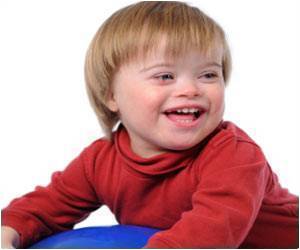
The study observed 25 infant siblings of children with autism (high-risk group) and 25 infants with no family history of autism (low-risk group) at six months of age in order to assess cause and effect learning as well as social engagement. Infant siblings of children with autism are considered at high-risk for the disorder, as they are 25 times more likely to develop autism. Researchers at Kennedy Krieger, in collaboration with colleagues at the University of Delaware, created a novel, multi-stimuli social learning task, where infants were seated in a custom chair with an attached joystick within easy reach, a musical toy located to the right and their caregiver on the left. Researchers evaluated how quickly the infant learned that the joystick activated the toy and the infant's level of social engagement with their caregiver.
Researchers found that, like the low risk group, the high-risk siblings exhibited typical levels of social gazing when their caregivers actively engaged them, such as pointing at the toy and expressing excitement. However, high-risk sibs spent less time looking to their caregivers and more time fixated on the non-social stimuli (toy or joystick) when the caregiver was not engaging them, which could indicate a disruption in development related to joint attention. Joint attention is often a core deficit for children with autism.
"My colleagues and I wanted to create a task that would involve learning something novel and would give babies an opportunity to pay attention to either an object or their caregiver," said Dr. Rebecca Landa, corresponding study author and director of Kennedy Krieger's Center for Autism and Related Disorders. "This study shows that there is a particular vulnerability in high-risk siblings at six months of age. They are not as socially interactive and engaged on their own as their peers, but still respond typically when engaged by their caregivers, making for a subtle difference that could be easily overlooked by both parents and some professionals."
The study also showed no evidence of impaired associative learning in the high-risk siblings. Both groups demonstrated cause and effect learning abilities; once the infants learned that pulling the joystick activated the toy, they increased how often they pulled on the joystick to activate the toy's music. This finding supports past research demonstrating that associative learning is a relative strength in older individuals with autism and may help to explain why children with autism respond well to teaching approaches that utilize a predictable reward system when children exhibit desired behaviors.
"Babies in both groups of the study learned the multi-stimuli task to the same degree," said Dr. Landa. "While the high-risk siblings are at a higher risk for developing autism later in life, they still have the capacity to learn cause and effect as well as their low-risk peers at this young age."
Advertisement
It is expected that about 20% of the high-risk infants in this study will receive a diagnosis of autism. While participants in this study have not yet reached their third birthday, the age at which the research diagnoses are confirmed, the study findings help to highlight the vulnerability of developing social initiation skills in high-risk infants. This study is the first of its kind, and a follow-up will soon be published from the Center for Autism and Related Disorders at Kennedy Krieger Institute.
Advertisement
Source-Eurekalert












